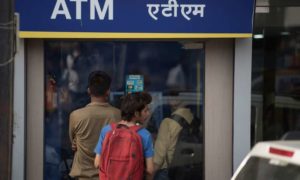Global ratings agency Fitch Ratings on Monday affirmed India’s Long-Term Foreign-Currency Issuer Default Rating (IDR) at ‘BBB-‘ with a stable outlook.
Read More:– HDFC Bank increases MCLR rates; auto loan EMIs, personal loan EMIs to go up
Fitch said the country’s rating “reflects strengths from a robust growth outlook” compared with peers and resilient external finances. The agency added this has supported India in navigating the large external shocks over the past year.
“These are offset by India’s weak public finances, illustrated by high deficits and debt relative to peers, as well as lagging structural indicators, including World Bank governance indicators and GDP per capita,” Fitch said.
Read More:– How To Change SBI Bank Account From One Branch To Another Branch Online – Explained In 10 Simple Steps
India poised for strong growth
In its ratings commentary, Fitch also forecast India to be one of the fastest-growing “Fitch-rated” sovereigns globally at 6 per cent in the financial year ending March 24.
The agency said this will be supported by resilient investment prospects, but highlighted that the country’s growth faces challenges due to elevated levels of inflation, high interest rates and subdued global demand, along with fading pandemic-induced pent-up demand.
Taking these headwinds into account, Fitch said they will slow growth from its FY23 estimate of 7 per cent before rebounding to 6.7 per cent by FY25.
Read More:– Dividend Stocks today, May 9: OFSS, Ramkrishna Forgings shares trade ex-date
Fitch also indicated that India’s growth prospects have brightened as the private sector appears poised for stronger investment growth following the improvement of corporate and bank balance sheets in the past few years, supported by the government’s infrastructure drive.
On the flip side, the agency indicated risks remain due to low labour force participation rates and an uneven reform implementation record.
“India’s large domestic market makes it an attractive destination for foreign firms. However, it is unclear whether India will be able to realise sufficient reforms to allow the economy to benefit substantially from opportunities offered by the deeper integration in global manufacturing supply chains, including China+1 corporate strategies that encourage diversification in investment destinations,” Fitch added.
Read More:– Cheque Bounce: Reasons, Consequences And What To Do Next
The agency highlighted a lot of other positives that could benefit the Indian economy, including improvement in the financial sector, moderating inflation, narrowing current account deficit, resilient external liquidity buffers, ESG – Governance and modest deficit reduction.
Some challenges remain
While the agency has backed India’s growth, it also said the country is on a “challenging consolidation path”.
“The government’s medium-term fiscal guidance retains its CG deficit target of 4.5 per cent of GDP by FY26, but provided limited details on how this would be reached,” Fitch said.
Also Read– GST Return 1 Filing: Key Things To Know Before Filing Nil Return And GSTR-1
“The government has demonstrated a recent commitment to meeting its budget targets. However, we believe it will be challenging to achieve this target, which would require accelerated consolidation of 0.7pp per year in FY25 and FY26, compared with 0.3pp in FY23 and 0.5pp in FY24. Future deficit reduction is likely to come mainly from trimming expenditure, in our view,” the agency added.
Another challenge, according to Fitch, is the high public debt burden. “India’s general government debt remains elevated at Fitch’s estimate of 82.8 per cent in FY23 relative to the ‘BBB’ median of 55.4 per cent,” Fitch said.
“Under our debt dynamics, we forecast debt to remain broadly stable at around 83 per cent of GDP in FY28, with an assumption of robust nominal growth of around 10.5 per cent and continued gradual consolidation,” it added.
Read More:– Hikes to open pay policy: Companies fine-tune appraisals
The lack of sustained debt reduction is likely to increase risks to the rating if India faces a future economic and fiscal shock, Fitch noted.
Fitch also said that a high government interest payment/revenue ratio of around 27 per cent in FY23 (BBB median: 7 per cent) is a growing structural fiscal weakness. However, it added that the country’s public finance risks are mitigated in part by limited reliance on external financing.
So, is Fitch’s rating positive for India?
The ratings agency’s ‘BBB-‘ rating for India indicated that the country’s financial strength is largely adequate, with a few risks associated with its ability to meet debt obligations.
Also Read– HDFC Bank hikes lending rates; loan EMIs to increase further
While this rating means that the issuer’s creditworthiness is considered to be lower than a higher-rated issuer – such as those with an A rating or above – it is still considered investment-grade, meaning that the issuer is relatively stable and the likelihood of default is not very high.
Though India faces some challenges in the medium term, Fitch’s commentary suggests that India is better-positioned than most other global peers in terms of economic growth.





































